NYC’s Forgotten ‘War on Christmas Trees’
Discover how an obscure holiday crackdown affects festive street vendors today!


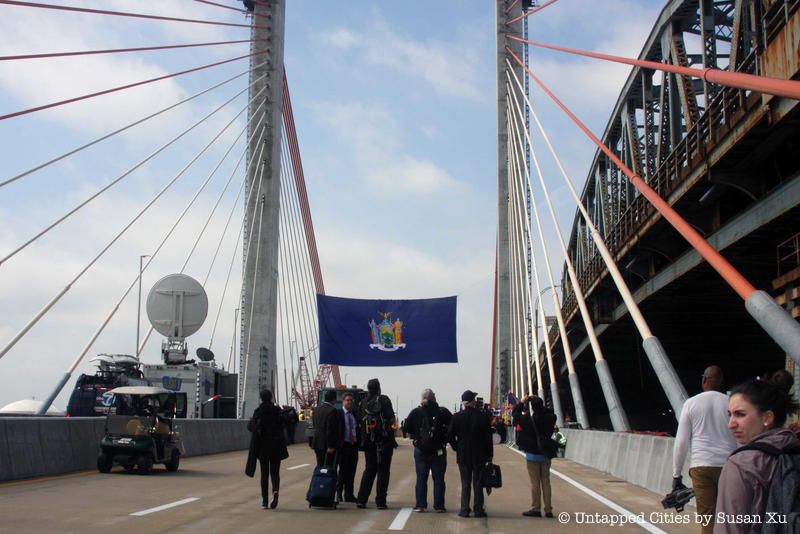
Yesterday, we attended the grand opening of the new Kosciuszko Bridge, and listened as Brooklynites and residents of Queens collectively released a sigh of relief. For years, the existing span has wheezed under the perpetual congestion at this infamous crossing between Greenpoint, Brooklyn and Maspeth, Queens. Now, drivers will no longer have to experience spontaneous bouts of road rage, as the new, state-of-the-art bridge (the Queens span) will temporarily carry the entire automotive load until a second, dedicated Brooklyn span (Phase II) is built.
In the meantime, here are 10 fun facts about the new Kosciuszko Bridge that we learned yesterday and directly from Skanska, the engineering and construction firm behind the project.
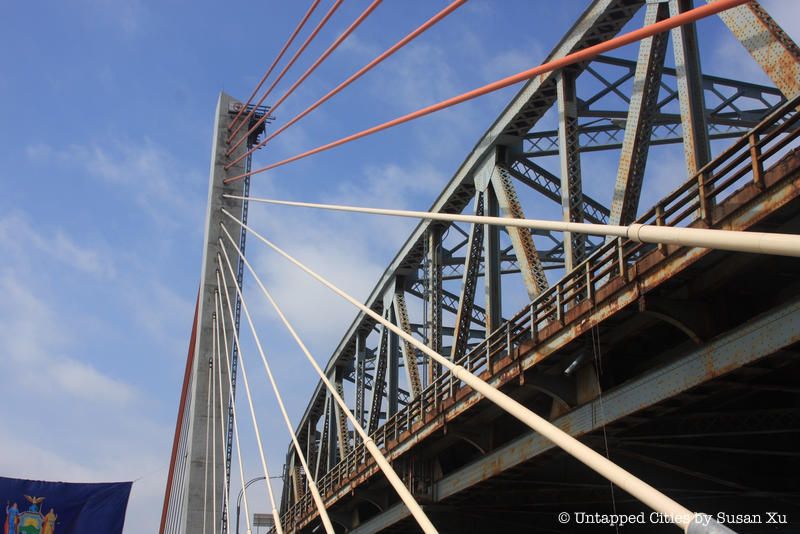
The Queens span of the new Kosciuszko Bridge is built from 998,141 linear feet of stay cable strands — that adds up to roughly 189 miles. It’s the first vehicular cable-stayed bridge in New York City, since the Brooklyn Bridge is technically a hybrid suspension/cable-stayed span.
In addition, the new bridge has a 20-foot bikeway/walkway, rectifying a major shortcoming of the previous span – whose two pedestrian walkways were eliminated in 1966 to add more care lanes.
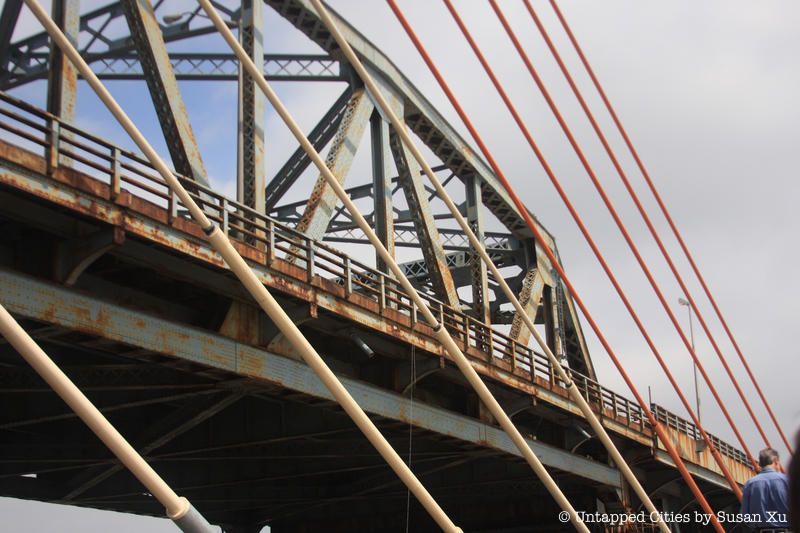
According to a fact sheet from Skanska about the new Kosciuszko Bridge, the 189 miles of stay cables of just the Queens span can circle the entire perimeter of Manhattan, not once, but SIX times.
This first span of the Kosciuszko Bridge was celebrated last evening with a synchronized LED light show, the first bridge with this technology in the city. Eventually, seven MTA bridges will also have this technology and will be part of the “New York Harbor of Lights” program.
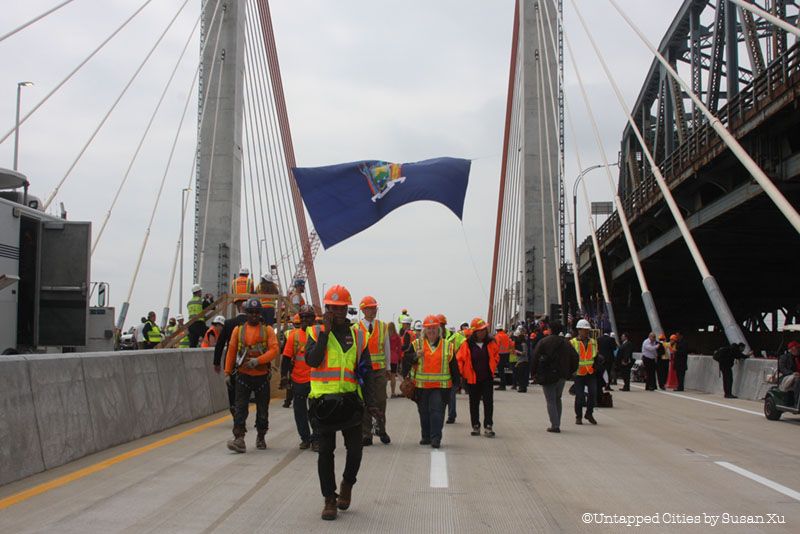
The construction of the Kosciuszko Bridge used 5,700,000 cubic feet of concrete, which is enough to cover all 1.3 square miles of Central Park with roughly two inches of concrete. Amongst this huge mass are 154 concrete girders that were installed for the bridge’s new approaches, which connect to the main span in Brooklyn and Queens. Each girder weighs between 106,000 pounds to 130,000 pounds for a total weight of 19.9 million pounds, or roughly the weight of 224 subway cars.
In addition, the Queens span required 5,147 tons of rebar, which weighs as much as 686 elephants, as well as 5.8 million pounds of steel.
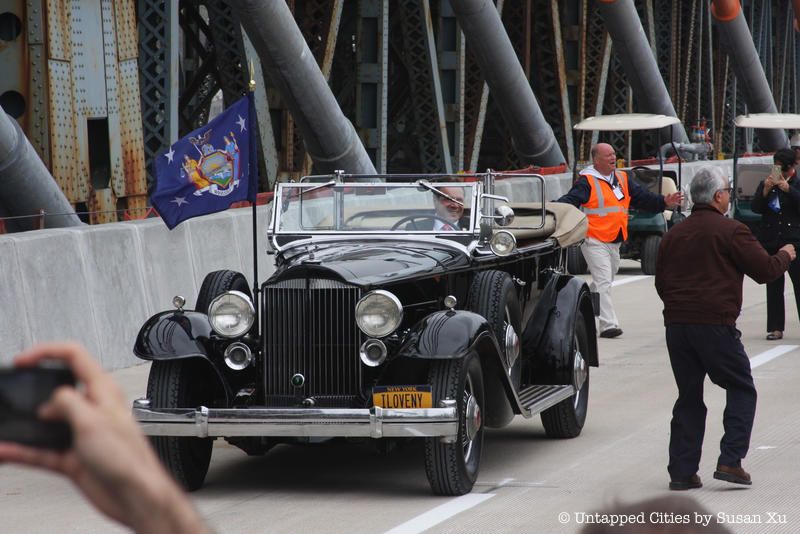
During yesterday’s grand opening, Governor Andrew Cuomo took the first test ride of the new Kosciuszko Bridge, pulling up in style in Franklin Delano Roosevelt’s 1932 Packard car. Fitted with an “ILOVENY” license plate, the car was brought out of a New York State museum and restored; it hadn’t been in use for 30 years. The stunt was intended to “bring the spirit” of Roosevelt to the momentous event.
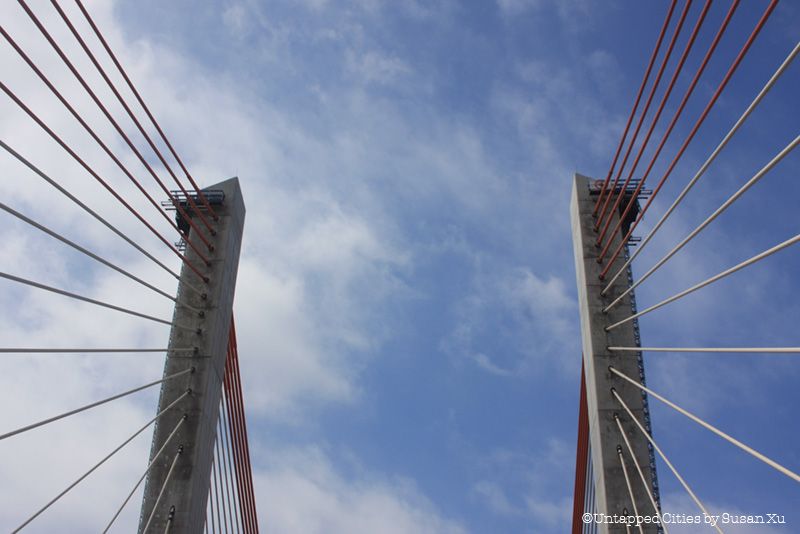
Soaring into the sky, the pylons of the new Kosciuszko Bridge measure 287 feet (nearly the height of the Statue of Liberty that stands at 305 feet tall). They’re made up of solid concrete up until the height of the bridge deck. From there, they turn into hollow tubes, where stairs provide access to cable anchorages and beacons required by the Federal Aviation Administration.
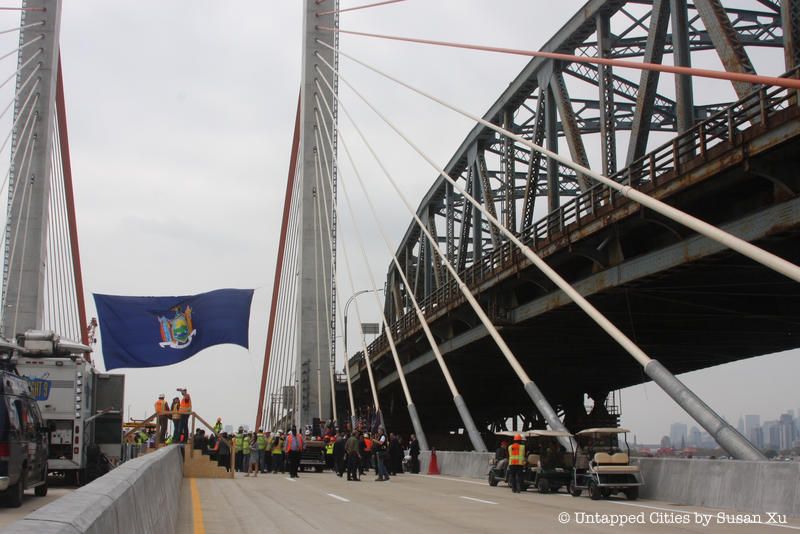
The western section of the Queens span is fitted with a 4,000-short-ton (3,600-long-ton) counterweight of concrete and steel plates. It was added to correct an “inherent imbalance,” as the main span is 624 feet long, while the lighter, eastern span measures only 377 feet long.
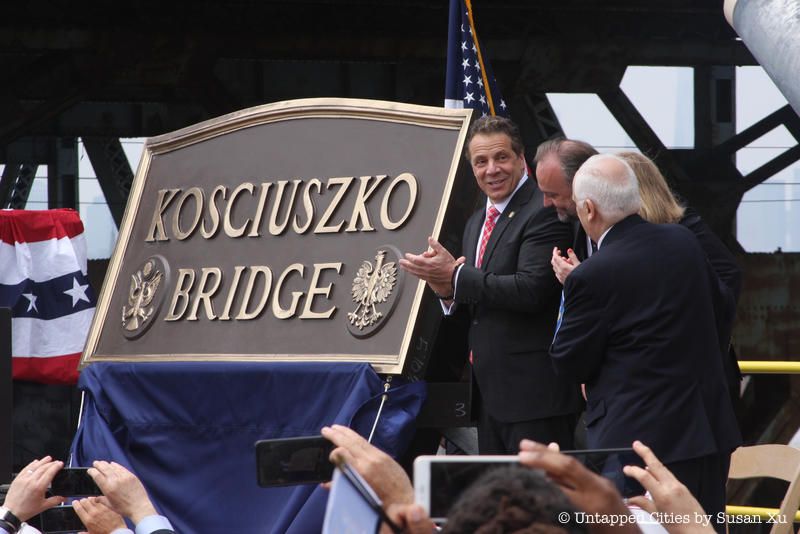
At $555 million, the new Kosciuszko Bridge is the largest single contract in the history of the New York State Department of Transportation. No wonder Cuomo invoked the spirit of Franklin Delano Roosevelt for the grand opening. As he stated during the ceremony, “If you want to continue to grow; if you want to continue to lead; you have to continue to build.”
The new Koscuiszko is the first major bridge built in New York City in fifty years. “For too long we have been relying on the legacy of our grandparents,” Cuomo noted. As some bridge enthusiasts have wondered, the price tag also included a restoration of the historical plaques (shown above).

“Burnt umber” — not “orange” — is the official color of the five outermost cables of the New Kosciuszko Bridge. The color choice doesn’t seem random: according to Robert Adams, the project director for the Transportation Department, it will define the bridge shape no matter what color the sky is. White cables, by contract, might get lost in the clouds.
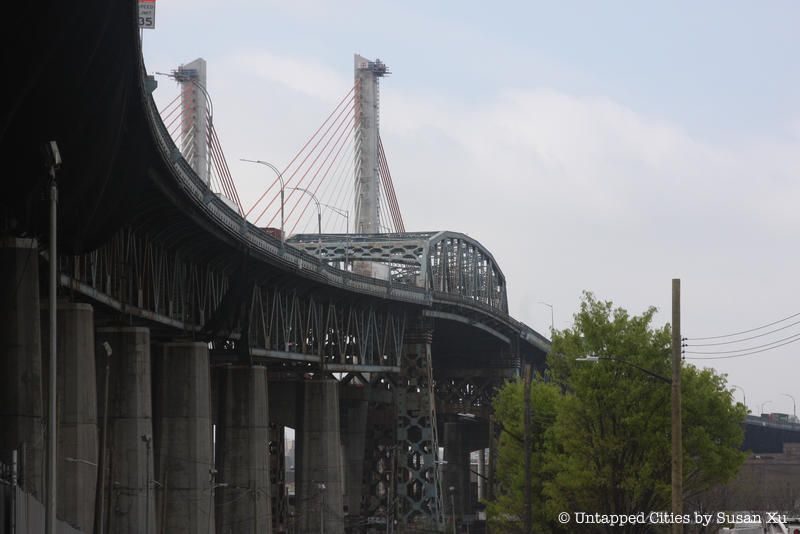
At 78-years-old, the old Kosciuszko Bridge is an infamous bottleneck. According to The New York Times, it is “perhaps the city’s most notorious [bridge], hated and feared by drivers …” As a remedy to the congestion, the new Queens span offers five lanes and the Brooklyn span will boast four when it opens. This is expected to reduce delays by up to 65% during rush hour, though New Yorker transit activists have expressed concern about the traffic impact on the Brooklyn Queens Expressway and local streets.
Next, check out the Top 12 Secrets of the Kosciuszko Bridge and read about New York City’s “other bridges.”
Subscribe to our newsletter